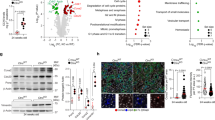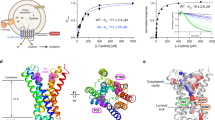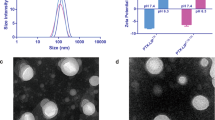Abstract
Summary: Lysosomally compartmentalized cystine can be removed from cystinotic cells by the use of reducing agents. In further investigation of means for converting cystine to a form or forms capable of penetrating the lysosomal membrane, a number of chemical agents either enclosed in phospholipid vesicles (liposomes) or free in solution were presented to cystinotic cells in tissue culture. After a 2-hr incubation, cystine content of cultured cystinotic cells was generally reduced more effectively by such agents in liposomes than in the medium. The most effective combination was cysteamine (MEA) in liposomes: a 0.5 mM dose of MEA reduced the cystine content of cystinotic cells 86% more when enclosed in liposomes than when dissolved at the equivalent dose in the medium. This observation could not be repeated when serum was omitted from the incubation medium, indicating that serum binds or otherwise inactivates cysteamine and that the liposome-enclosed cysteamine is protected from this action. Other liposome-entrapped compounds tested showed little if any depletion of intracellular cystine beyond that caused by non-liposome-enclosed drug action. Some agents increased the intracellular cystine content. Others of low molecular weight proved to be poorly retained by liposomes, a factor which may have been responsible for their relative ineffectiveness. Cysteamine, which is positively charged at neutral pH, was retained effectively when enclosed in “negative” liposomes made by inclusion of phosphatidic acid in the lipid mixture.
[35S]Cysteamine (2.5 μCi, 23 μg/g), both free and enclosed in liposomes, was injected intravenously into mice. Ratios of MEA uptake by phagocytic as compared to non-phagocytic tissues (e.g., kidney/brain) were higher in liposome-injected than in control mice, indicating preferential uptake of liposome-enclosed MEA by selected tissues of mice corresponding to those exhibiting high levels of cystine accumulation in cystinotic patients. Cell fractionation of liver and kidney from MEA-liposome-treated mice showed a much higher proportion of radioactivity in the mitochondrial-lysosomal fraction than in control animals receiving the same drug dissolved in medium.
Speculation: Drugs such as MEA and dithiothreitol (DTT) have been used in treatment of cystinotic patients, as they are effective in reducing intracellular accumulations of cystine in vitro. They are, however, toxic, particularly to brain tissue. Cyctine is known to accumulate in large amounts in certain actively endocytic tissues in cystinosis. The administration of liposomes containing drugs aimed at reducing or otherwise altering the accumulated cystine might prove advantageous as a therapeutic measure if selectivity of uptake into target tissues could be improved, particularly since these lipid carriers are nonallergenic and degradable by lysosomal enzymes after their uptake by phagocytic cells.
Similar content being viewed by others
Log in or create a free account to read this content
Gain free access to this article, as well as selected content from this journal and more on nature.com
or
Author information
Authors and Affiliations
Rights and permissions
About this article
Cite this article
Butler, J., Tietze, F., Pellefigue, F. et al. Depletion of Cystine in Cystinotic Fibroblasts by Drugs Enclosed in Liposomes. Pediatr Res 12, 46–51 (1978). https://doi.org/10.1203/00006450-197801000-00012
Issue date:
DOI: https://doi.org/10.1203/00006450-197801000-00012



